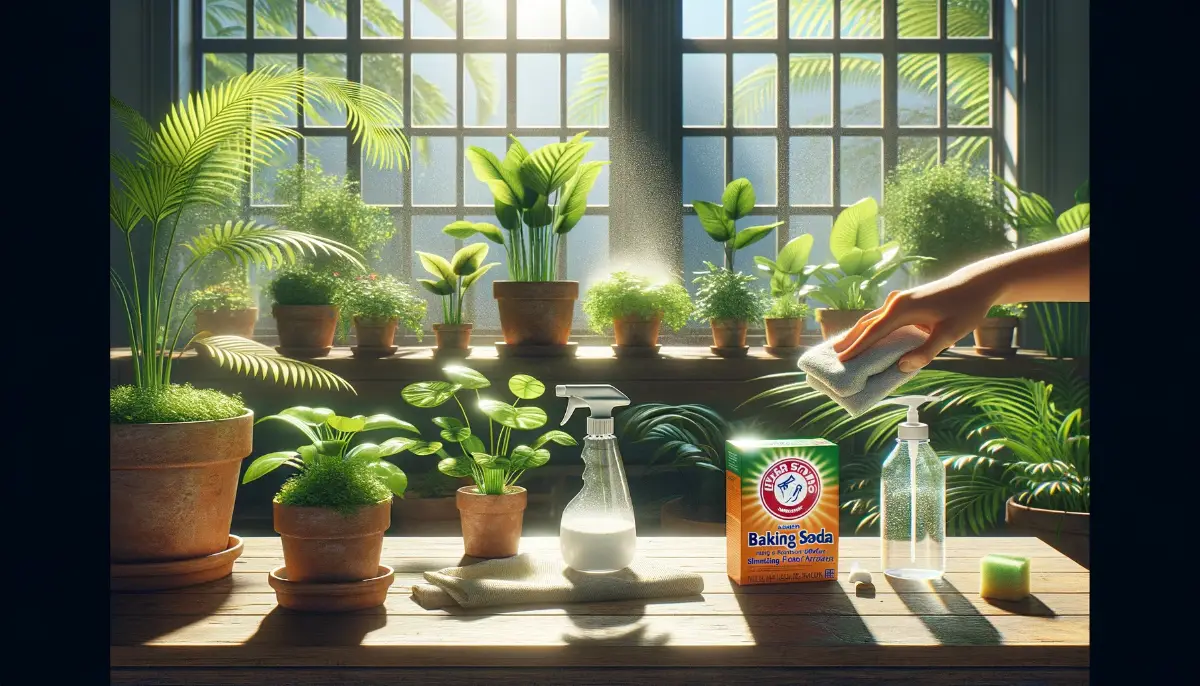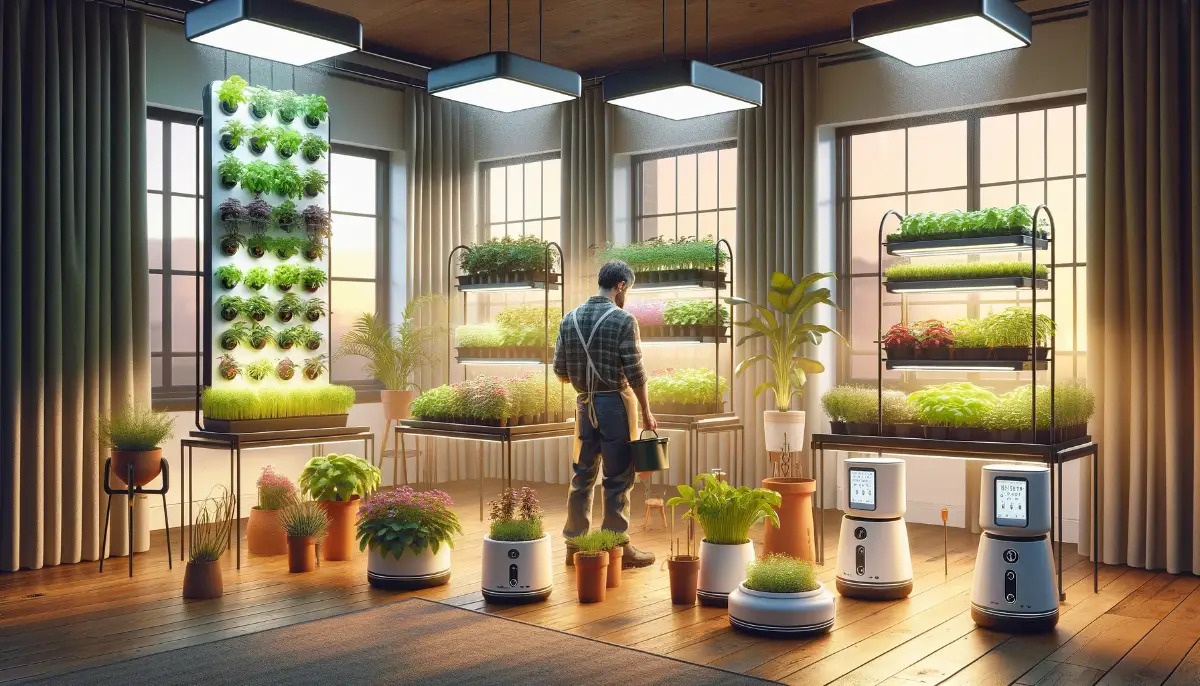Baking soda, a common household item, has been gaining popularity as a natural and effective way to promote healthy plant growth in organic indoor gardening.
This inexpensive and eco-friendly substance can help strengthen your plants, improve soil quality, and even combat pests and diseases.
In this article, we’ll explore the benefits of using baking soda for plants and provide you with some practical tips on how to incorporate it into your organic gardening routine.
Baking soda, also known as sodium bicarbonate, is a multi-talented ingredient that offers a natural solution to various gardening problems. Its fungicidal, pesticidal, and pH-balancing properties make it an effective tool in tackling common garden issues.
Moreover, its non-toxic and environmentally friendly nature makes it an ideal choice for gardeners seeking eco-conscious ways to care for their indoor gardens.
Benefits of Baking Soda for Indoor Plants
Natural Fertilizer
Baking soda provides essential nutrients to indoor plants. It is a natural source of sodium, which promotes healthy plant growth.
pH Balancer
Baking soda helps to balance the pH level of the soil. It neutralizes acidic soil and creates a more favorable environment for plant growth.
Pest Control
Baking soda repels pests and insects that can harm indoor plants. It dehydrates pests, preventing them from causing further damage.
Fungal Diseases Prevention
Baking soda prevents fungal diseases in indoor plants. It reduces the risk of root rot and other fungal infections.
Soil Detoxification
Baking soda detoxifies the soil by removing heavy metals and other toxins. This creates a healthier environment for plant growth.
Improved Water Absorption
Baking soda improves water absorption in indoor plants. It helps plants to absorb water more efficiently, reducing the risk of overwatering.
Natural Air Purifier
Baking soda absorbs and neutralizes pollutants in the air. This creates a healthier environment for both plants and humans.
Remember to use baking soda in moderation, as excessive use can harm indoor plants. Start with a small amount and observe the results before increasing the dosage.
How to Use Baking Soda on Indoor Plants
- Fungicide and Pesticide Spray
Mix 1 teaspoon of baking soda with a quart of water and a few drops of liquid soap (to help it adhere to the plant leaves). Spray this solution lightly on the foliage to combat mildew, fungus, and pests. Avoid overuse, as excessive application can lead to leaf burn.
- Soil pH Adjustment
To slightly increase the soil’s pH, sprinkle a small amount of baking soda around the base of the plant. This method should be used sparingly and only for plants that thrive in neutral to slightly alkaline soil.
- Cleaning Plant Leaves
A gentle wipe with a cloth dipped in a baking soda and water solution can remove dust and grime from leaves, improving photosynthesis.
Tips for Success
- Test Before Applying: Always test the baking soda solution on a small part of the plant first to ensure it does not react negatively.
- Use in Moderation: Baking soda is alkaline; too much can harm the plants. It’s crucial to use it sparingly and only when necessary.
- Monitor Plant Response: After applying baking soda, observe your plants for any changes. Adjust your usage based on their response.
Incorporating baking soda into your indoor plant care routine can lead to healthier plants and a more vibrant indoor garden. Its fungicidal, pesticidal, and soil pH adjusting properties, coupled with its safety and eco-friendliness, make it a valuable tool for any indoor gardener. Remember, the key to success lies in its moderate and informed use. Happy gardening!
FAQ of Baking Soda for Indoor Plants
Can baking soda harm my indoor plants?
Baking soda is generally safe for use on indoor plants when applied in moderation. However, excessive use or too concentrated a solution can cause leaf burn or imbalance the soil’s pH. Always perform a patch test and observe your plant’s response.
How often can I use baking soda on my plants?
It’s best to use baking soda sparingly, only when necessary, such as when you notice mildew formation or pest infestation. Typically, applying a baking soda solution once every 1-2 months is sufficient. Monitoring your plant’s health is key to adjusting frequency.
Will baking soda kill plant pests?
Baking soda can help deter certain pests like spider mites and aphids but may not kill them outright. It’s more effective as a preventative measure or in conjunction with other pest control methods.
Can I use baking soda to adjust the soil pH for all types of indoor plants?
Not all plants will benefit from a soil pH adjustment using baking soda. It’s best suited for plants that prefer neutral to slightly alkaline soil conditions. Research your specific plant’s needs before applying.
Is there a difference between using baking soda and gardening-specific fungicides and pesticides?
Baking soda is a natural, non-toxic alternative to chemical fungicides and pesticides. While it may not be as potent against severe infestations or diseases, it’s safer for use around pets and children and is environmentally friendly.
How do I make a baking soda solution for my indoor plants?
Mix 1 teaspoon of baking soda with 1 quart of water and a few drops of liquid soap (to help the solution adhere to leaves). This general-purpose solution can be used for mildew prevention and pest control.
Can baking soda be used on all parts of the plant?
Baking soda solutions are primarily used on plant leaves and stems. Avoid applying directly to the soil or the roots unless you’re specifically aiming to adjust soil pH, and even then, use it very cautiously.
How does baking soda prevent fungal growth on plants?
Baking soda creates an alkaline environment on the plant’s surface, which is less hospitable to fungal growth. It disrupts the pH balance, making it difficult for fungi to thrive.
What should I do if my plant reacts negatively to baking soda?
If you notice any signs of distress, such as yellowing or burnt leaves, stop using the baking soda solution immediately. Rinse the plant with plain water and allow it to recover. Consider consulting with a gardening expert for further advice.
Can I mix baking soda with other natural remedies for a stronger effect?
While baking soda can be mixed with other natural ingredients like neem oil or vinegar for specific purposes, it’s essential to research and test any mixture on a small part of the plant first. Some combinations may be too harsh or counterproductive.









